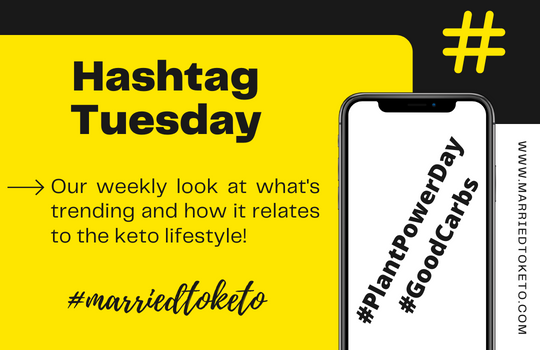It’s Plant Power Day today. Plants have a lot of jobs in our lives – pretty ones make us happy, the first blossoms are signs of spring, and plants are an important part of our diet. Okay, carnivores might disagree, but most of us think this is true. But can you have plants on keto? They are holders of the evil carbs. What part in a healthy keto diet do plants play, if any?
Plant Based Diets
I was a vegetarian for much of my 20’s. Growing up on a farm, I was all too aware of the link between animals and the meat I ate. It’s not a new concept. According to National Today, people back from 3300 B.C. have eaten a completely plant-based diet due to cultural and ethical beliefs. I’m not that old, but when I was a vegetarian, it was difficult to eat at restaurants. I ate a lot of grilled cheese sandwiches.
Today, our diets are about choice, rather than necessity. There are vegans, who do not eat any animal-based bi-products (like eggs or dairy), up to carnivores, who eat pretty exclusively meat. And, of course, everything in between. So where does the keto diet fit in all of this?
Why Do You Promote Plants on Keto?
Like I said, plants have up of carbs, and carbs are a no-no on keto. So, how do they fit together? Well, all plants are not created equally. We do not eat grains like wheat or rice on keto. We do eat vegetables and berries. Bill and I believe very strongly that most of the carbs we take in should be from vegetables and, to a lesser extent, berries. Luckily, the lower carb vegetables are the ones with the most nutrients, so that’s a win-win.
For example, a ½ of a cup of broccoli has just 2 net carbs. 2 stalks of celery has 1 net carb in it. You’ll see a lot of keto recipes that call for cauliflower, which has just 1 net carb in ½ of a cup. Some people deem cauliflower a “super food” as it is high in fiber, vitamin C, and vitamin K. It’s also high in antioxidants.

Getting Your Plants on Keto
Vegetables today are expensive, so getting a bunch of your nutrients with a small amount of servings is a good thing! I will admit, we haven’t eaten a lot of cauliflower lately, because it’s $7 a head and that’s when there is brown on the heads! I enjoy raw vegetables, so they do tend to be more expensive. If you can find frozen options that are vegetables only (no added salt or sugar), they can be a good option. Of course, you have to cook those.
The one problem we have with fresh vegetables is that they are hard to keep! It’s difficult to eat all of it before it goes bad. It helps to have a meal plan, so you know how much to buy and when. The other thing that helps is knowing how to package the vegetables so they keep as long as possible.
I cut up the broccoli and cauliflower, put it in an air-tight bag and package a folded up piece of paper towel with it. The paper towel keeps the moisture from getting to the vegetables, and keeps them longer. Celery keeps longer if you cut the stalks and put them in a mason jar filled with water. Keep them in your fridge, and they stay crispy and fresh.
Growing your Food
Some people take the initiative to grow their food. Gardening is a wonderful pastime for many. I have a hate-hate relationship with plants; I hate growing them and they hate growing for me! We decided one year before we started keto to grow some beans and peas. It was so much work, and we got a whole 5 meals worth of vegetables out of the entire thing. Not for me, thanks. I will go to a farmer’s market and pay someone else for taking the time and energy to grow me food.
So, even if you are on keto, you can still celebrate plant power day! Have some asparagus and slather butter over it. Dip your raw vegetables in a mayonnaise-based dip. Have your Caesar salad with extra bacon but no croutons. Enjoy your vegetables, knowing you are contributing to your health.
Wendy



